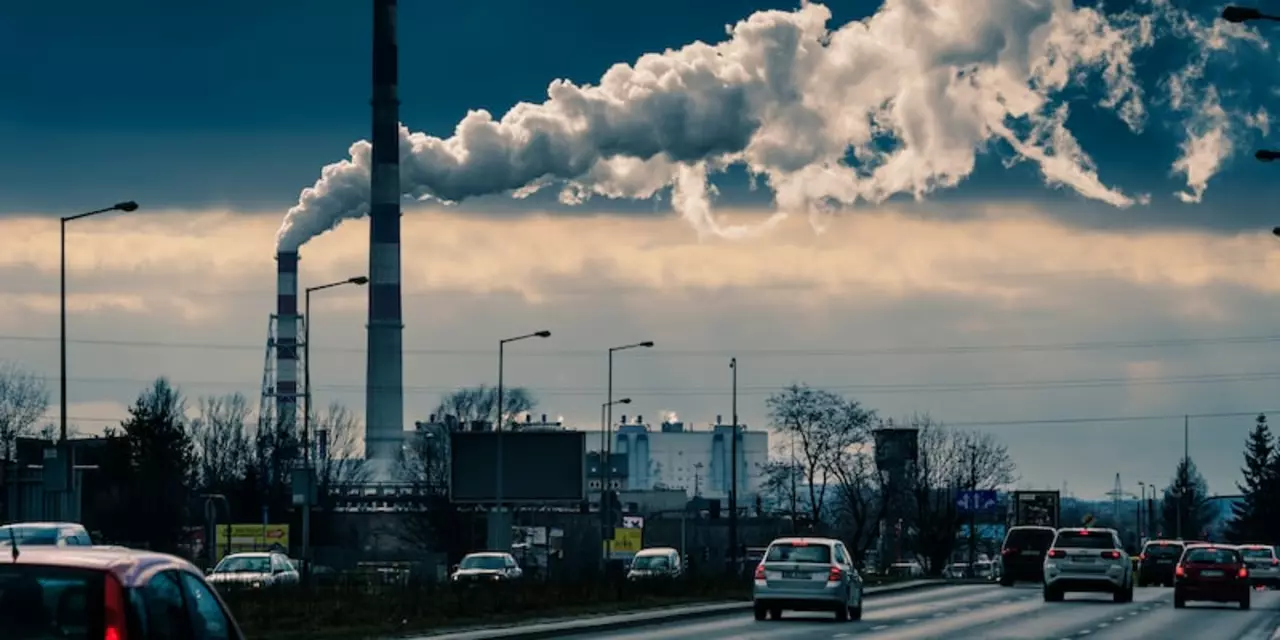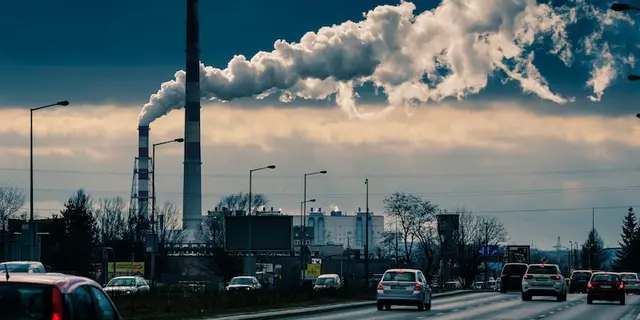Air pollution can greatly increase during the winter months. Particulate matter, ozone, and other pollutants can become more concentrated in the air, leading to a variety of health problems. But why does air pollution rise in the winter? Let’s take a look at some of the causes.
Temperature Inversions
Temperature inversions are when the air temperature increases with altitude. This can occur naturally, but they are more common during the winter months. These inversions trap pollutants in the lower atmosphere, leading to higher concentrations of air pollution.
Vehicle Emissions
Vehicles are one of the major contributors to air pollution, and they are more heavily used in the winter as people need to drive more to get around. This increases the amount of emissions in the air, leading to higher levels of air pollution.
Home Heating
During the winter, homes need to be heated to stay warm. This means people use more natural gas and other fuels, which can lead to increased air pollution. The burning of these fuels releases pollutants into the air, resulting in higher air pollution levels.
Industrial Activity
Industrial activity also increases during the winter months. Factories and other industrial sites increase their production to meet the higher demand for goods during the winter. This increase in activity can lead to more pollutants being released into the air, resulting in higher levels of air pollution.
These are some of the causes of increased air pollution in the winter. Understanding the causes of air pollution can help us find ways to reduce it and create a healthier environment for everyone.
Air pollution is an ongoing concern for many people living in urban areas. Unfortunately, winter air pollution levels often spike in cities around the world. This can have a significant impact on human health, as the air we breathe can contain a variety of harmful pollutants.
The winter air pollution season usually begins in November and lasts through March. During this time, the air is often cold and still, allowing pollutants to linger in the atmosphere. Pollutants such as particulate matter, nitrogen dioxide, and ozone can all be present in the air, and these pollutants can have serious health consequences. Particulate matter, for example, can cause respiratory and cardiovascular problems, while nitrogen dioxide has been linked to asthma, allergies, and other respiratory issues.
In addition to these pollutants, car exhaust is also a major contributor to winter air pollution. The cold temperatures of winter cause engines to malfunction more than usual, releasing more harmful emissions into the air. This is especially true of older vehicles, which may not have the latest emissions control technology. The combination of these factors can create a toxic environment that can be dangerous to human health.
Winter air pollution can have serious consequences for human health, and it’s important to understand the risks. People should take steps to limit their exposure to air pollution by using public transportation, avoiding areas with heavy traffic, and avoiding the use of aerosol products. It’s also important to stay informed about air quality so that you can take the necessary steps to protect your health.
As winter months approach, air pollution levels often rise. This is due to a variety of factors, including colder temperatures and an increase in the burning of fossil fuels. Fortunately, there are several solutions that can help reduce winter air pollution.
1. Improve Vehicle Efficiency
One of the most impactful solutions to reduce winter air pollution is to improve the efficiency of vehicles. This means using cleaner fuels, such as natural gas and electricity, as well as developing more efficient engines. By reducing the amount of fuel that is burned, less pollution is released into the atmosphere.
2. Promote Sustainable Energy Sources
Sustainable energy sources, such as solar, wind, and geothermal, can help reduce winter air pollution by providing clean, renewable energy. By promoting the use of these sources and investing in research and development, we can reduce our reliance on fossil fuels and help reduce air pollution.
3. Implement Low-Emission Zones
Low-emission zones are areas where vehicles with high emissions are prohibited. This can help reduce air pollution in cities and towns by restricting the use of older, more polluting vehicles. By implementing these zones, we can help reduce winter air pollution and protect public health.
4. Increase Public Awareness
Increasing public awareness of air pollution can help reduce winter air pollution by encouraging people to take action. This can include simple steps, such as carpooling, using public transportation, and avoiding outdoor burning. By educating people on the dangers of air pollution and the steps they can take to reduce it, we can help reduce winter air pollution.
By taking these steps, we can help reduce winter air pollution and protect public health. While these solutions may not solve the problem on their own, they are important steps in the right direction. By taking a collective effort, we can help reduce winter air pollution and create a healthier environment for everyone.
Winter weather conditions can contribute to the rise of air pollution levels. Cold air is denser, meaning it can trap pollution near the ground and is harder to disperse. As temperatures drop, the air becomes stagnant, trapping pollutants and reducing air circulation. This can lead to a build-up of air pollution, which can have a damaging effect on our health.
In the winter months, many people light fires in their homes for warmth. Burning wood or coal produces smoke and particles that can contribute to air pollution. In addition, vehicles produce more pollutants when they are driven in cold weather, resulting in more air pollution in the winter months.
Overall, air pollution levels are higher in the winter months due to the combination of cold weather and human activity. Winter weather can trap pollutants in the air, leading to a build-up of air pollution. In addition, human activities such as burning wood or coal and driving vehicles can further contribute to the rise of air pollution levels. It is important to be aware of the effects of air pollution and take steps to reduce it.

